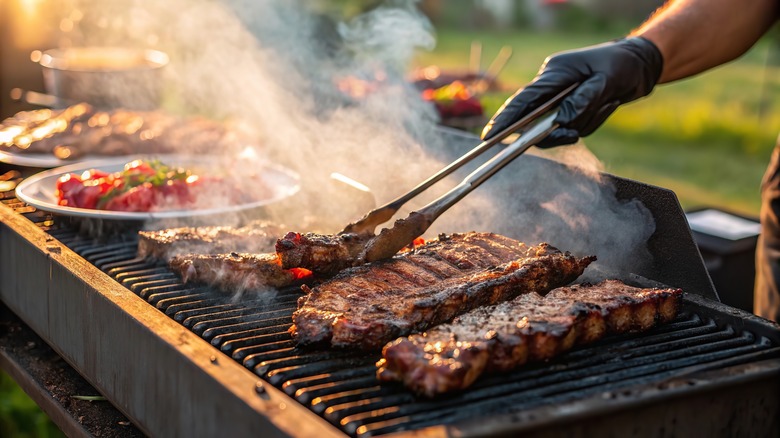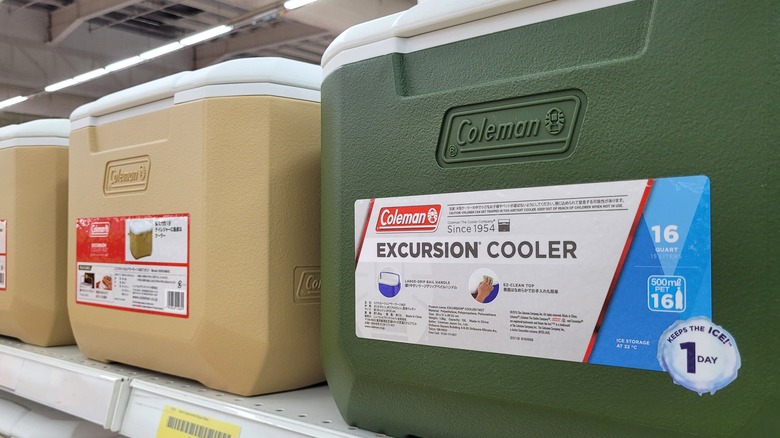The Absolute Best Way To Rest Your Grilled Meat, According To Our Experts
One of our favorite essential grilling hacks has nothing to do with the actual cooking process — it's what comes after. Foodie compiled expert tips for better barbecue by talking with some experienced grillmasters, and perhaps the most surprising tip had to do with resting your barbecued meat. You already know that you should let your meat sit for a while after cooking, as this process (called "resting") allows the edges of the steak to cool sufficiently. This way, muscle fibers relax, and the precious, flavorful juices flow towards them and stay inside your meat when cut, instead of spilling onto the cutting board. Unrested meat tends to be considerably drier and doesn't taste as good, both of which can be blamed on lost juices.
To get more info about properly resting grilled meat, Foodie feature writer spoke with Michael Conlon, pit boss at Virgil's Real BBQ, and Scott Thomas of The Grillin' Fools. They both recommended a quality cooler for storing cooked meat while it rests. This can also help you avoid temperature issues, a food safety mistake that could ruin your summer barbecue. As Thomas told our writer, "I once kept the Thanksgiving turkey warm for three hours wrapped in foil and a towel in a cooler. It was one of the best turkeys I've ever grilled. And when I peeled that foil back, the steam nearly melted my face off, well, almost." Wrapped properly, your meat will sit at a food-safe temperature as long as necessary, resting deliciously while you finish the other components of your meal.
What to know about resting meat in a cooler
We've seen carryover cooler cooking referred to as a "faux Cambro method" after the containers that caterers use to keep precooked food warm. But how long should meat rest in your makeshift resting vessel? The answer is "probably longer than you'd think." While small cuts of meat like steaks or chicken can get away with a brisk 5- to 10-minute rest, bone-in meats might need as long as half an hour. Meanwhile, whole briskets (or turkeys, like Scott Thomas's!) should optimally rest for as long as two hours.
Make sure that you have the right cooler for the job as well, as you don't want your meat to get crowded in there. For most home grillers who are throwing small get-togethers, a quality 52-quart cooler is going to afford you ample room and keep your food hot for up to four hours. Of course, before putting your meat inside, make sure the cooler's interior is clean and dry.
Swaddled in foil and a towel, your meat should stay nice and toasty — but, for the safety of everyone who will be dining on said meat, make sure that you stick a meat thermometer in your barbecue beast. Don't open the cooler except for quick temperature checks, as doing so will allow heat to escape. If you want to keep your barbecued meat hot for longer than four hours, rig up a platform to elevate your meat and pour very hot water into the bottom of the cooler to increase the temperature.

